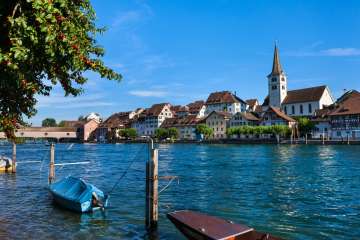
Idyllic villages as well as lively little towns can be found in the gentle greenery of rural Thurgau. What they all have in common is that they know how to preserve their historic past. Wonderful timber-framed buildings, historic bridges or the picturesque lakeside location are just as fascinating as the legacy of pile dwellers or industrial pioneers. The following is a compilation of the most beautiful gems in the Lake Constance canton.
Discovering and experiencing makes you thirsty: Whether by the water, in the midst of blossoming fruit trees or high above the vineyards - over 100 Thurgau innkeepers look forward to your visit.